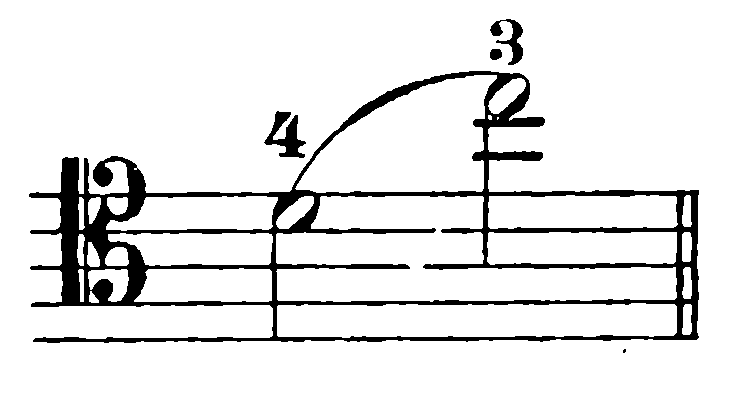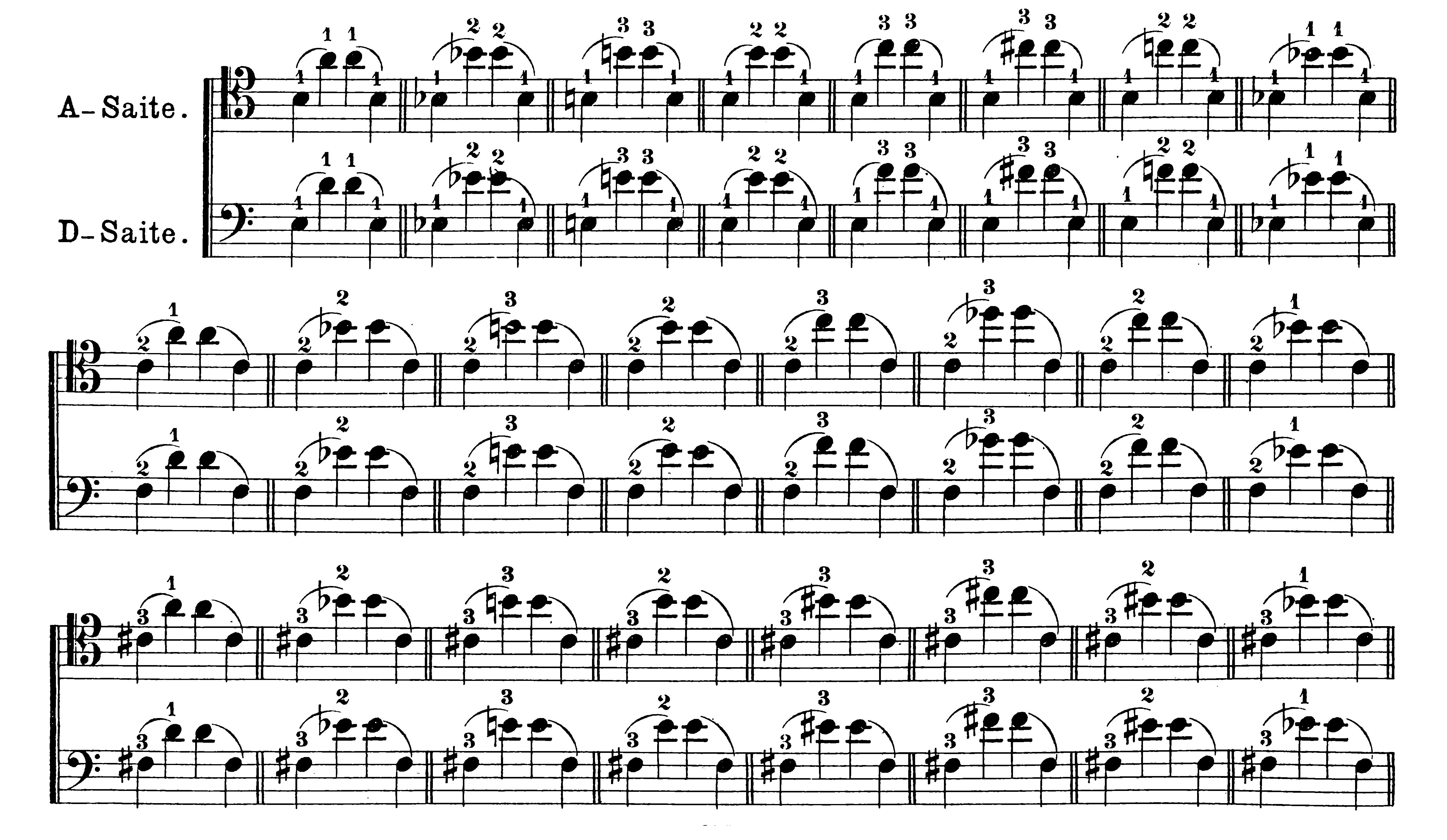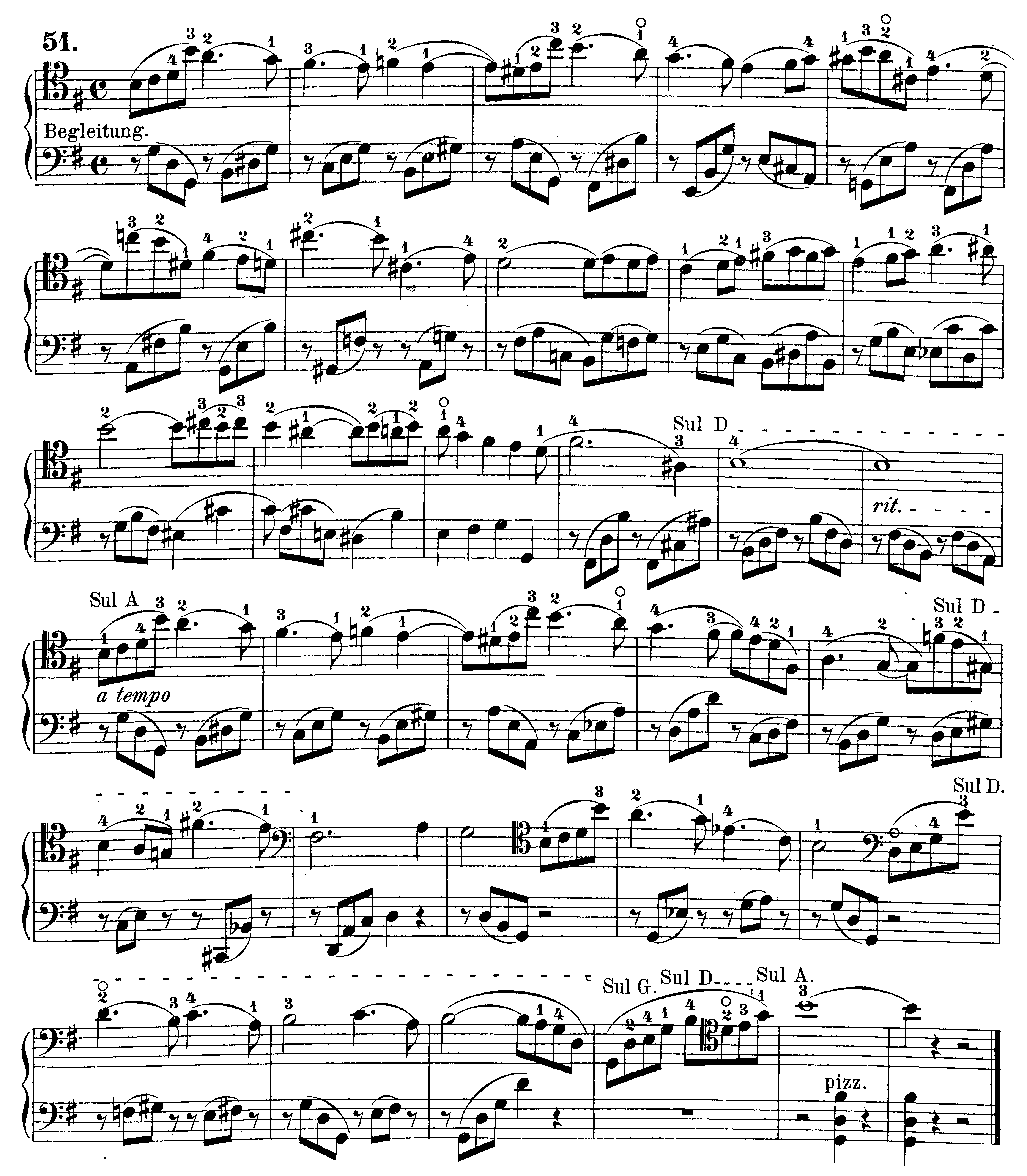Shifts from Lower to Higher Positions
In shifts from lower to higher positions, most of the exceptions to the rules concern the shifting finger and the dropping finger. These exceptions by necessity concern the fourth finger, which cannot play in higher positions.
A shift performed by the “new” finger can sometimes sound good here, especially when (as with an experienced player) it does not begin immediately and the fingers “peel off,” so to speak. In the following figure:
 the third finger does not shift directly out of first position (i.e. from the C-sharp). The fourth finger begins the shift, and is replaced by the third finger as it is lifted up. Only then does the new finger start the movement up to the high C. This kind of position shift requires great skill, however, to ensure that the lifting of the finger is not heard. The whole thing gives the impression that the third finger is shifting from D to C.
the third finger does not shift directly out of first position (i.e. from the C-sharp). The fourth finger begins the shift, and is replaced by the third finger as it is lifted up. Only then does the new finger start the movement up to the high C. This kind of position shift requires great skill, however, to ensure that the lifting of the finger is not heard. The whole thing gives the impression that the third finger is shifting from D to C.
One more instance—which presents many difficulties for the beginner—should be pointed out here. This is the when the “old” note of a shift is muffled in shifts of larger intervals (sixth, seventh, octave, etc.). In the following figure:
 the notes marked “NB” are often muffled or indistinct, because the beginner is only thinking about the “new” note. A shift of a large interval often begins before the notes are clearly sounding. It is therefore very advisable for beginners to place more emphasis on these notes, and not to think about the shift until the “old” note is clearly established—or even to make it somewhat longer than it is due.
the notes marked “NB” are often muffled or indistinct, because the beginner is only thinking about the “new” note. A shift of a large interval often begins before the notes are clearly sounding. It is therefore very advisable for beginners to place more emphasis on these notes, and not to think about the shift until the “old” note is clearly established—or even to make it somewhat longer than it is due.
The following examples show all the position shifts between first and seventh positions. The shifts between other positions are done in a similar way.
[“A-Saite” = “A-string”] [“D-Saite” = “D-string”]


Example
